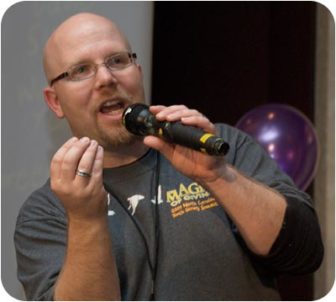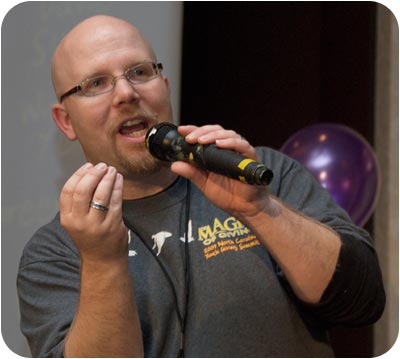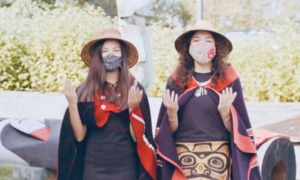 Just three words … three simple, yet powerful words when spoken by one of our OST program participants. “That’s not fair!” What lies behind this sentiment could be a deeper exploration of some of the most critical challenges facing our communities today: Injustice … inequity … ignorance.
Just three words … three simple, yet powerful words when spoken by one of our OST program participants. “That’s not fair!” What lies behind this sentiment could be a deeper exploration of some of the most critical challenges facing our communities today: Injustice … inequity … ignorance.
Now what if we could unpack these challenges in one of the most unassuming settings — the after-school program.
For the past 20 years, we have been working with OST and youth-serving programs to build the capacity of their staff, participants and communities they work with through innovative training techniques. Along the way, we’ve witnessed firsthand the powerful impact that dynamic OST providers have on the young people who fill their afternoons, mornings and in-between academic schedules.
As OST professionals, our work is often measured in number of hours spent, ratio of staff to children and even academic progress. Yet every provider knows first-hand that the impact of our work far exceeds the quantifiable metrics tied to their funding source or school board. Rather, we have an unparalleled opportunity during the prime-time hours with these students to engage them authentically, empathetically and pragmatically along the lines of fairness, equity and social justice. I call on each of us as youth professionals to use our OST settings as a powerful venue to dive deeper through social justice-based programming.
In a time of significant political polarization and racial division, we have seen young people struggle to work though the level of discord they see in the media and experience in daily life. The after-school program can provide a structured setting that not only provides a forum for exploration of injustice, but also a vehicle for powerful discussion and strategy of how to respond to what’s “not fair.”
Furthermore, OST providers can integrate a social justice-based lens into their work through three different strategies: real-world examples, metaphorical comparisons and through the facilitated experience of cognitive dissonance.
“Stay relevant and evolve. Be aware of the world around you and respond to its unpredictable nature.” —Tim Smyllie, art director
There is no shortage of real-world examples to illustrate the impacts of inequity in the communities of our young people. Whether through the explored headlines of www.dogonews.com to the analysis of magazine or other print media, youth professionals can utilize these resources as the basis of a deeper discussion. For example, an activity introduced in “Is Everyone Really Equal” suggests the selection of 10 photos of people in a magazine to assign stereotyped attributes to each image — i.e. “Who’s the smartest,”, “Who’s a stay-at-home parent,” “Who’s the wealthiest,” etc.
Another interactive application of social justice-based programming can be found in the community mapping/environmental scan of the neighborhoods the young people live in. For example, a geographic analysis of the number of parks, libraries, municipal services and recreational facilities may contrast sharply with the concentration of alcohol outlets, food deserts and poverty in a young person’s neighborhood.
OST participants can then utilize this visual map as a basis of difference, inequities and how to understand and address what’s not fair in their very own communities. These real-world examples not only shed light on disparities among the streets they navigate, but also give a foundation for young people to ask “what if” to better understand the complexities of inequity.
“Metaphors have a way of holding the most truth in the least space” —Orson Scott Card, author
In between snacks, academic enrichment and outdoor play, OST professionals can also integrate concepts of fairness versus inequity through metaphorical examples. Building on the historical foundations of Jane Elliott’s “Brown Eyes, Blue Eyes” experiment, youth providers can intentionally create settings that model injustice. A great example can be found through the use of rolled-up paper basketballs, an intentionally placed trashcan and a clear advantage of access to a select group of players.
A variation of this structured privilege can be easily replicated with a deck of playing cards, where only those holding a club or spade are provided with extra benefits ranging from additional snacks, first access to OST opportunities, behavioral allowances and an overall sense of preferential treatment.
Will some of the young people receive better treatment? Absolutely. And will some of the youth be upset? Count on it. Youth professionals can utilize these metaphors as the basis for deeper exploration of what “didn’t seem fair” and use their frustration to bring to light examples they have experienced in real life.
“Before the truth can set you free you need to recognize which false belief is holding you hostage.” —Author unknown
Experienced OST professionals may find a cognitive dissonance approach one of the most effective ways to engage youth in a discussion of inequity. Cognitive dissonance is defined as “the feeling of uncomfortable tension that comes from holding two conflicting thoughts at the same time.” This strategy creates a “what, but wait” moment for the after-school participant to work through the challenge they experience when questioning what they have always known to be correct.
This technique can be seen through the viewing of multiple video clips, including the Always campaigns “Like A Girl” and Nike’s “This Is Us.” The conversations behind these videos and even the use of teaching tools such as diversity beans and challenged stereotypes from Teaching Tolerance (which gives free materials to educators) provide the mechanism for young people to pause, struggle and begin to question what they may have always been led to believe.
“If you want children to keep their feet on the ground, put some responsibility on their shoulders.” —Abigail Van Buren, advice columnist
OST professionals have a distinct advantage to creating a dynamic learning environment. Whereas the traditional school day is often structured in curriculum-based rigor, what occurs after the bell rings can look, and feel, quite different. From an in-depth analysis of song lyrics (i.e. “I” by Kendrick Lamar or “Most Girls” by Hailee Steinfeld) to an interactive experience that showcases inherited power and privilege, the after-school setting is an ideal arena for our young people to expand their awareness of how the world works around them.
Critical explorations of race, class, and gender (i.e. questioning the foundations of expressions like “talk white,” “dress ghetto,” “that’s so gay”) can, and should, be inextricably woven into the after-school experience. When we create these opportunities that challenge prejudice, address inequity and strategically encourage our students to struggle through “what’s not fair,” we raise the bar on what we can do in the OST setting.
Eric Rowles is president and CEO of Leading to Change, where he has presented to more than 150,000 youth professionals in 15-plus years. He has also served as adjunct faculty with the Business, Sociology and Cultural Studies departments for the University of North Carolina, Charlotte; Rutgers University, and Central Connecticut State University.
































